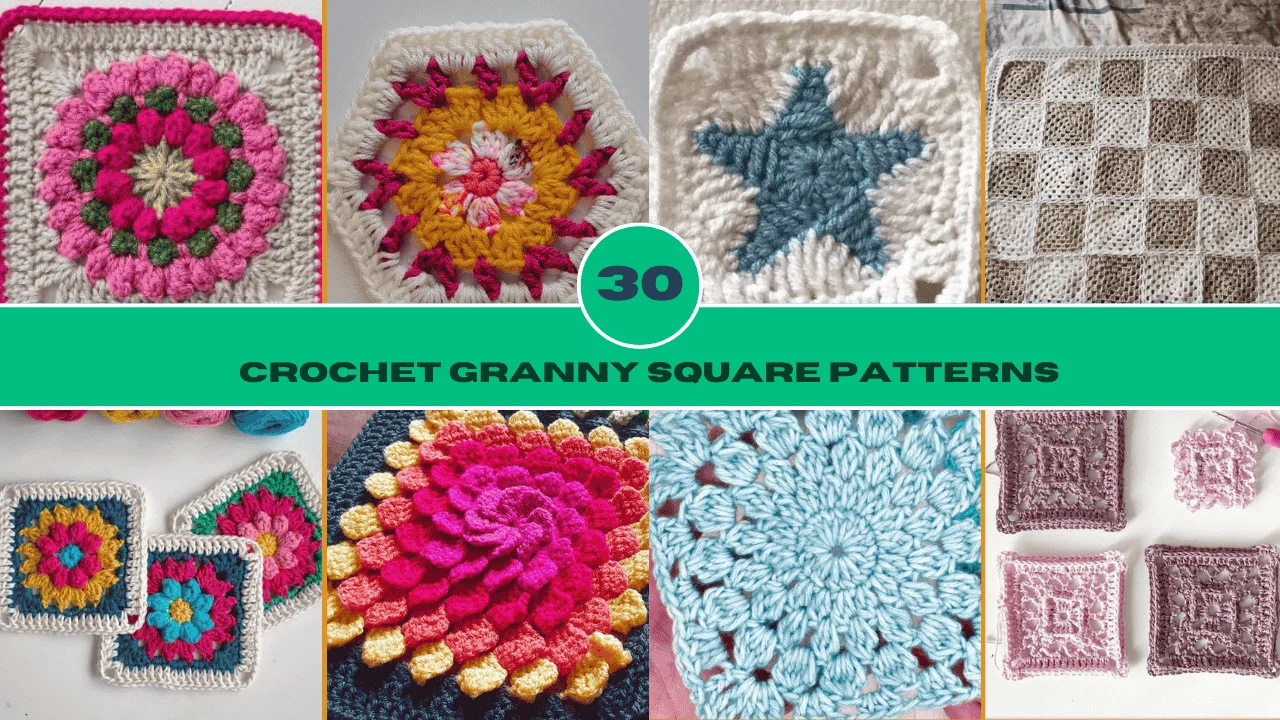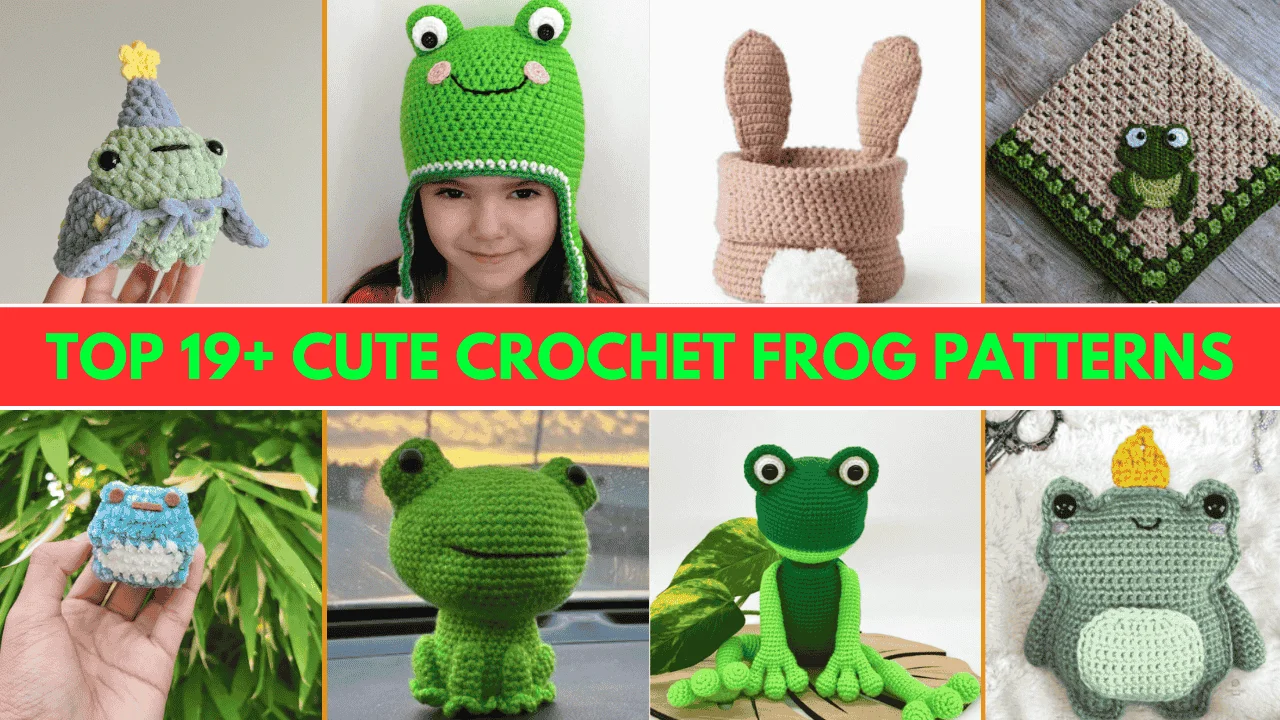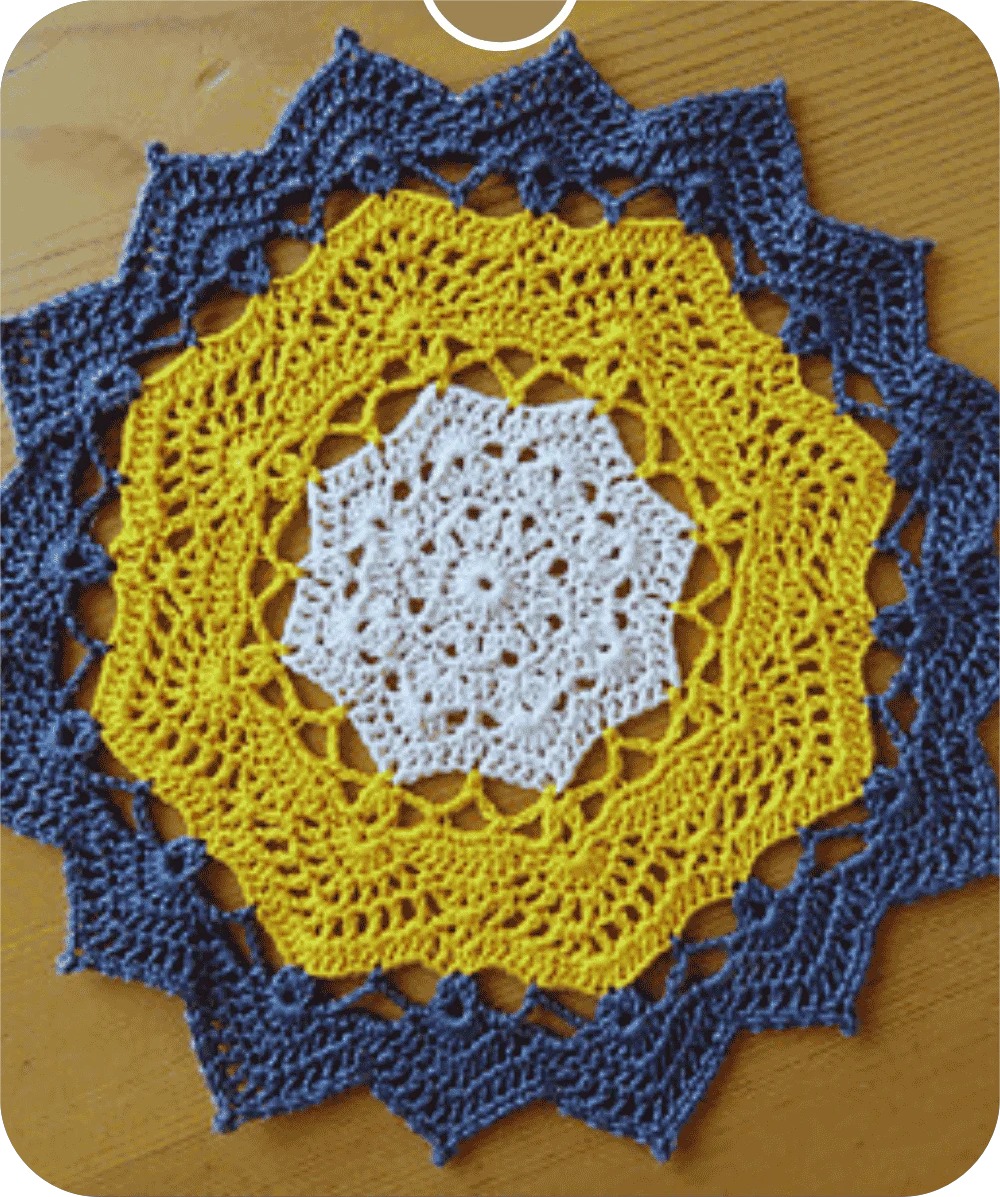Do you know how to slip stitch crochet and what is this? Slip stitch crochet is a basic stitch that most artists need help with on their projects. Problems with tension, specialties, open stitches, and putting the hook in the wrong place are some of the mistakes that people often make. To fix these, ensure you have the proper tension and that each stitch is finished through. Also, always keep your hook in the right place.
As with any technique, unequal tension or unfinished stitches are common, so learning how to mend them helps with slip stitching. It will teach you all the basic slip-stitch crochet mistakes and how to fix them so that your finished project is perfect.
Key Takeaways:
- Adjusting the Tension: Rarely raise or lower the tension to prevent the stitches from being too tight or free.
- Finish Stitches: Don’t leave a stitch unfinished; it’s better to do one stitch over than to start one stitch and then do half of it.
- Hook Insertion: One skill is putting the hooks in the right place so the stitches don’t get caught up or out of place.
In This Post
- What is Slip Stitch in Crochet?
- Why is Slip Stitch Important in Crochet?
- Where Is Slip Stitch Used In Crochet Projects?
- What Materials & Tools are Needed for Slip Stitch Crochet?
- Which Is the Best Yarns for Slip Stitch Crochet?
- Which Is the Right Hook for Slip Stitch Crochet?
- How to Slip Stitch Crochet? [Step-By-Step]
- Types of Slip Stitch in Crochet
- Slip Stitch Patterns for Different Projects
- Advanced Slip Stitch Crochet Techniques
- Joint Slip Stitch Crochet Mistakes and Solutions
- Combining Slip Stitch with Other Crochet Stitches
- Slip Stitch in Crochet Fashion and Accessories
- Slip Stitch Crochet for Left-Handed Crocheters
- Conclusion
- Frequently Asked Questions (FAQs)
- In what group of crochet skills does slip stitch crochet fit?
- Should new people to crochet try slip stitch?
- Does slip stitch make it possible to plan a whole project?
- How do I fix slip stitches that are not even?
- What’s making my slip stitches so tight?
- How do slip stitch crochet pieces together with the slip stitch?
- What’s different about slip stitches from the other stitches?
- Is it possible to slip stitch when making amigurumi?
- How can I get my slip stitches to be tighter?
What is Slip Stitch in Crochet?
Slip stitching crochet allows you to join stitches without raising the fabric. This easy but valuable skill is something you should learn. Crochet patterns involve yarning over and pulling the yarn through the stitch and hook loop. When you slip stitch, the results are flat and smooth.
This lets you know How to slip stitch crochet two ends together, finish the sides, or make hard-to-make styles. Every crocheter should know this because it makes it easy to switch stitches and keeps the tension.
Why is Slip Stitch Important in Crochet?
Here are some reasons why slip stitch in crochet is important:
- Seamless Joins: The slip stitch is the best way to join pieces of How to do a slip stitch in crochet without adding extra bulk. This makes a clean seam that is almost unnoticeable.
- The base for other stitches: It’s used as a base or starting point for many crochet patterns, especially ones that need complicated sew mixes.
- Effective for moving throughout Rows: Slip stitches let you flow through a row without adding a peak. This makes moving your hook to a new starting point easier without changing the design.
- Makes clean Edges: This stitch helps create neat and smooth edges, making it perfect for finishing the edges of blankets, scarves, or clothes.
- Versatile Design: Slip-sewing is adaptable in terms of texture and design. It can make ribbed patterns, colorwork styles, or even decorative parts for a project.
- Essential for working in the round: Slip sew is often used to close loops in circular crochet projects, ensuring a smooth end.
Where Is Slip Stitch Used In Crochet Projects?
Slip stitch is often used in different crochet projects. Learn how to slip stitch crochet to join, make borders, and finish the sides. The last gaps need to go in the round and move between stitches without adding a peak.
Slip stitch is also commonly used in decorative styles and ribbing to give clothes, accessories, and home decor projects more texture and detail.
What Materials & Tools are Needed for Slip Stitch Crochet?
Before learning slip stitch crochet, determine what you need. These are the essential items and tools for any crochet job. A crochet hook and yarn are the most important things you need. The following items are extras that make the work easier and faster. When you choose the suitable materials for your slip stitch projects, they turn out the best.
- Yarn: Slip stitch is unique because it changes depending on your yarn. If you want this pattern, you need to choose a suitable yarn.
- Hook for crocheting: A ruler ensures the hook is the right size, so the stitching is simple and doesn’t cause too much stress.
- Stitch Markers: These are especially helpful for making on top of stitches in rounds, which are used extensively in her work.
- Scissors: Cut the yarn exactly when you’re done knitting or purling.
- Tapestry Needle: This keeps the Arr and sec and ensures a smooth finish.
- Stitch markers: Stitch markers help you see the beginning and end of a round or pattern and add more detail to a regular cycle.
- Measuring tape: It ensures that your project’s size is right.
- Row Counter: This feature is helpful, especially when working on a project with many rows.
- Blocking mats: Blocking mats and pins are mainly used on flattened stock to help set finished pieces to keep their shape.
- Yarn Needles: Cohesion: For sewing the project’s free ends and other times when there are tight ends.
Which Is the Best Yarns for Slip Stitch Crochet?
- Cotton yarn: Cotton yarn is the best material for making stiff things without external flaws. The stitches are clear and sharp, and working with them is easy.
- Acrylic yarn: Acrylic yarn is cheap, flexible, and soft. It is popular with beginners because it is available in many colors.
- Wool yarn: Plain wool and design yarn are strong enough to make winter items like hats and scarves and keep people warm.
- Blended Yarns: To make fibers easier to use and make them better for slip stitch, do the following
Which Is the Right Hook for Slip Stitch Crochet?
- Metal hooks: Metal hooks make sewing smooth and can make the close slip stitch.
- Wooden hooks: Wooden hooks are suitable for big projects because they are easy to control and don’t tire your hands out.
- Vinyl hooks: Vinyl hooks are cheap and light, making them ideal for people just starting.
- Ergonomic Hooks: These hooks have handle grips designed to make crocheting for long periods more manageable for the hands.
Let’s see the hook size for slip-stitch crochet:
| Hook Size | Description |
|---|---|
| Smaller Hooks (2mm to 3.5mm) | Smaller hooks (2mm to 33.5mm) are best for projects that require more accuracy, such as those using lace-weight yarn or any thinner than worsted-weight yarn. |
| Medium Hooks (4mm to 6mm) | These hooks work best with DK or Worsted weight yarns and can be used for almost any fabric requiring slip stitch. |
| Larger hooks (7mm and up) | These work best with thick or high-volume yarns and are great for making extra large blankets and thick scarves. |
But, What Size Hook Will you Use, right? When you slip stitch, it’s best to use the correct hook size for the weight of the yarn. The right hook also sets the proper tension and ensures the stitches are clean and even.
How to Slip Stitch Crochet? [Step-By-Step]
Some people use slip-stitch crochet to assemble projects, so it’s essential for all crocheters. Slip stitch is also used to finish off the sides and rounds. Follow these step-by-step procedure:
Step 1: Create a Foundation Chain

First, create a slipknot and then a base chain as long as you want your scarf to be. This chain will be your slip stitch’s foundation and starting point. Leave your chain stitches a bit slack so your hook can fit through; slip stitches must be done at a relaxed tension.
Step 2: Insert the Hook
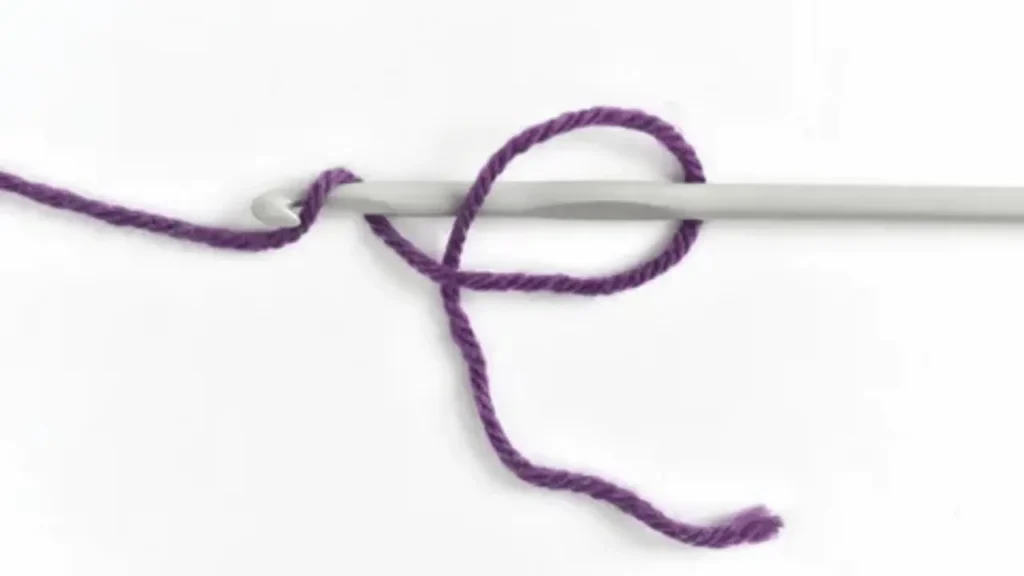
After you have made your last yarn over, place the crochet hook under the yarn in the next stitch. For the slip stitch, insert your hook under both loops for a good grip. Work the hook under both layers of fabric when sewing or joining pieces.
Step 3: Yarn Over
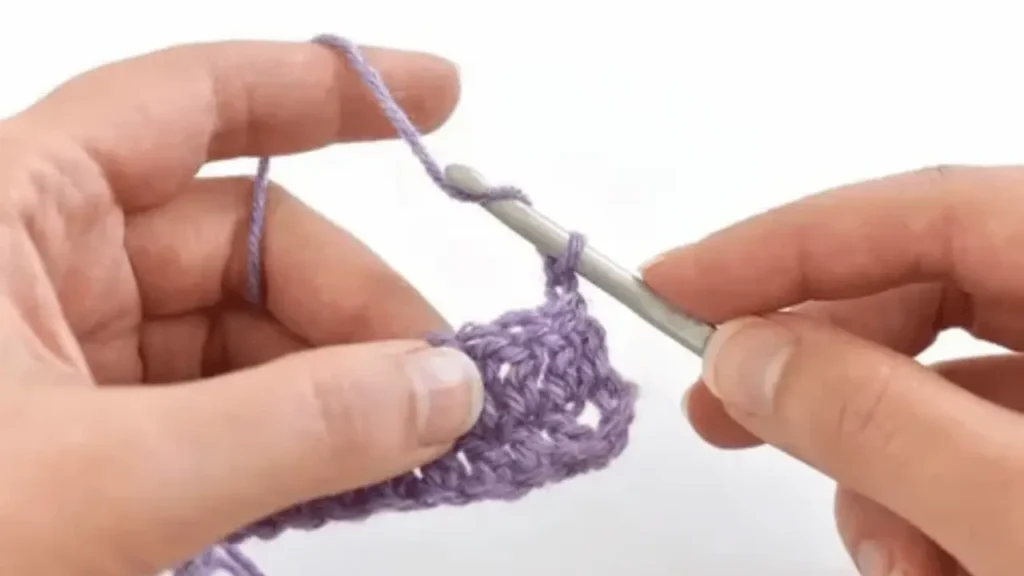
After you have made your last yarn over:
- Place the crochet hook under the yarn in the next stitch.
- For the slip stitch, insert your hook under both loops for a good grip.
- Work the hook under both layers of fabric when sewing or joining pieces.
Step 4: Pull-Through Both Loops
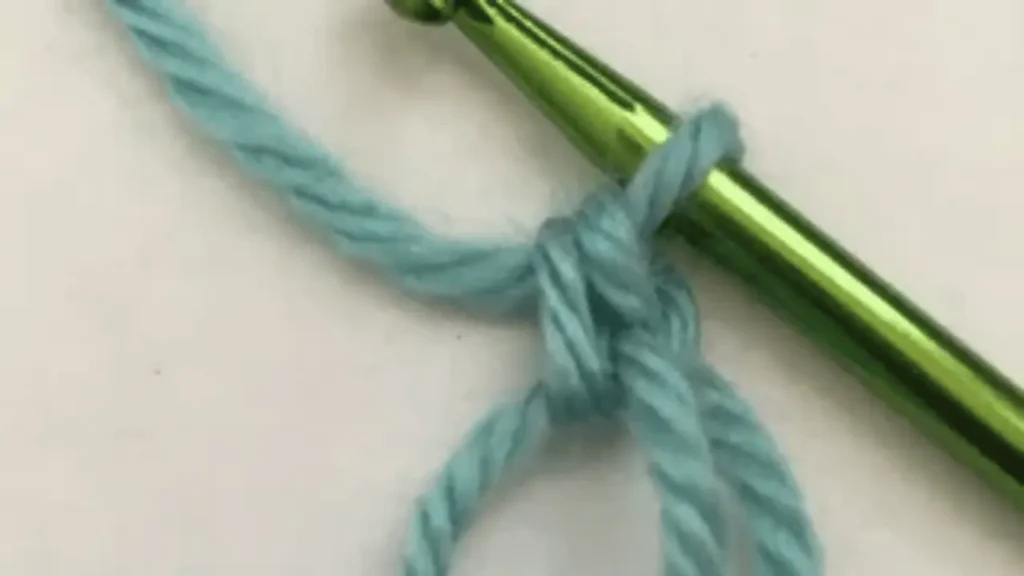
Now insert the yarn in the stitch and the loop on the yarn hook in one continuous motion toward you. This concludes the slip-stitch operation. You should maintain equal tension and do not make the stitch too tight.
Step 5: Repeat the Process

Pull through the bar between the stitches again, yarning over and through both loops to slip the stitch. Repeat this step until you finish the row or round according to your project.
Step 6: Finish Off

You can trim the yarn during the last stitch of each row or round of slip stitches; you’ll be left with a small end. Pull the loop through the final one using the same hook, which tightens to finish the stitch. It must then be run through with a yarn needle to blend with the fabric to look professional.
Types of Slip Stitch in Crochet
Slip stitches can be used in crochet in different ways, with several varieties. In the following order, these are some of them:
Basic Slip Stitch
The Basic Slip Stitch is the easiest out of all the slip stitches. It involves putting the hook into the stitch, wrapping the yarn around it, and then going through the stitch and loop with the hook and the new loop. It is used to keep the edges of round work neat or in place and to tidy up the ends of rows in crochet work.
Back Loop Slip Stitch
To make a Back Loop Slip Stitch, you only work into the stitch’s back loop and skip over its front loop. This technique is often used on textured interfacings or stretches for cuffs, necklines, or other stretch uses because it gives the fabric a slightly raised, corduroy-like look.
Slip Stitch in the Round
Making a chain is the first step in round slip stitching. Next, slip the stitch into the first chain to make a circle you will work from. This method works well for hats, bags, or patterns that go around in a circle. When they join, there is a clean, almost unnoticeable joint that makes a perfect roundoff.
Slip Stitch in the Front Loop
The front loop has a slip stitch. When you do How to make a slip stitch in crochet, the hook only goes through the front loop and leaves the back loop alone. This stitch is smoother and flatter than the back loop slip stitch. It is suitable as a medium for making decorative troughs or giving planned models textures.
Working Slip Stitch in Rows
Working Slip Stitch in rows makes a series of horizontal bands out of slip stitches. Since each row is finished below the last, the cloth is tight and has a favorable structure. This method is excellent for making things with a thick structure like bags, coasters, warm accessories, and so on.
Slip Stitch Patterns for Different Projects
Slip stitch patterns are easy to learn and apply to any project. They create stunning knitted or crocheted creations. New and experienced knitters use slip stitches for their beauty and simplicity. Discover the following slip-stitch patterns with incredible impacts on your work!
Blankets
Slip stitch designs are great for blankets because they make the fabric very tight and dense, which is great for blankets, afghans, and other things. One easy method is to switch between rows where all the stitches are slipped and rows where half-double crochet stitches are used to make lines. Another design is the Ribbed Slip Stitch. In this one, back loop slip stitches are done in rows, which makes the fabric quite stretchy. Not only do these patterns keep you warm, but they also give your blanket projects a clean look.
Scarves
With the slip stitch designs, it turns into a soft, warm, and classy fabric. It can be used to make scarves. The easiest is the woven design for slip-stitch scarves. This is made by adding slip stitches and making chains look like woven fabric. One way is to use back loop slip stitches to knit them in a ribbed design that fits snugly but can be stretched. This makes the scarf stylish to wear around the neck if you want to.
Borders for Crochet Project
In its most basic form, Adding borders with slip stitches is a great way to finish off your crochet work. Use the same tension for the slip-stitch border as you would for any other stitch around the edge of the project. You can put it on blankets, scarves, and even clothes to give them shape and a smooth finish. Slip-stitch borders are usually used to make the finished item look neat and professional.
Sweaters and Cardigans
Most of the time, slip-stitch designs add shape and interest to sweaters and cardigans. Slip stitch ribbing around the cuffs, neckline, and hem, for example, makes the clothing stretchy to fit right. Slip stitches can also be used to join and seam parts of the garment together, and the seam is almost unnoticeable. It also keeps your jumper or cardigan from losing shape and is perfect for all-day ease. The slip stitch also works well in color designs, making it easy to switch patterns for clothes of different colors or materials.
Advanced Slip Stitch Crochet Techniques
The first slip-stitch crochet adds style and usefulness by adding delicate patterns and parts. The following techniques let crocheters show their creativity through unique patterns and improve accuracy and beauty without struggling with slip-stitch crocheting. Let’s see the steps in detail:
Ribbing Techniques
Slip stitch ribbing is a way to add detail to the edges of sleeves, waistbands, and necklines of clothes. When they work slip stitches, they only use the back loop. This makes the fabric stretchy and ribbed, a lot like knit ribbing.
This method works well and can be easily expanded. The work also looks good and is well organized. Knowing how to crochet is essential because it can be done in every row and every stitch across a row.
Tunisian Crochet
In Tunisian crochet, a unique stitch called a slip stitch is used to finish a row or make the sides less sheer. Slip stitches are also used to make fabrics tighter and more beautiful. Using a slip stitch to link Tunisian stitches, you can get textures and patterns that mix the two crochet styles. The finished items will still look smooth and finished, which is what Tunisian crochet is known for.
Colorwork with Slip Stitch
Using slip stitch crochet for color work allows you to cross more yarns and create detailed designs without weaving across rows. Slipping some opposing stitches and knitting the other creates attractive striping, geometric designs, or plaids.
Using this method, you can make screen-printed patterns for hats, scarves, and blankets that make the colors stand out and make the fabrics feel light and smooth.
Textured Effects Using Slip Stitch
It is possible to add depth to specific projects with slip-stitch crochet. Putting slip stitches in the back, front, or even third loop makes the surface bumpy and has different patterns. This method is mainly used to make home textiles like colorful pillows and fabrics for scarves and blankets.
When you need to strengthen specific areas with tall stitches like double crochets, slip stitches are a great way to make the difference look smooth.
Seamless Joining Techniques
The slip stitch is a great way to combine crochet pieces so that few or no lines are visible. Slip stitches are used to finish the edges of your pieces, and they are then tightly sewn together so that the line is almost invisible.
Slip-stitch joining is the way to go when you need clothes, blankets, and neat and professional items.
Invisible Seams
Another great way to make an almost unnoticeable seam is to slip-stitch it. Slip stitches are worked on the back of the crochet fabric, and the hook only grabs the inner loops. This is why there are no lines on the front.
This method works best for finishing touches, clothing, and projects where loops or stitches must be hidden and become part of the design.
Tips for Neat and Tight Joins Using Slip Stitch
- Use consistent tension: Keep your slip stitches tight but not too tight to avoid puckering.
- Work through both loops: To strengthen the joint, insert the hook through both loops of the stitches on each piece.
- Use a matching yarn color: To keep the seam invisible, choose a yarn that matches the color of your project exactly.
- Weave in ends carefully: Secure and hide yarn ends with a yarn needle to maintain a clean, polished look.
Joint Slip Stitch Crochet Mistakes and Solutions
When working with joint slip stitch crochet, how to avoid making all the common mistakes people make:
Slip Stitch Get Tighter
When a stitch gets too tight, it slips. To loosen it up, you need to stretch the yarn.
To fix this,
Ensure you’re not pulling the yarn too tight while working on the stitch. It also helps to use a bigger crochet hook.
Setting Out Unequal Stress
The stitch formation is not even when the tension is too tight or free. To prevent this, learn to control your yarn in steady, regular moves so it doesn’t get tangled up. As you knit, make sure that the tension on the yarn hooks stays the same the whole time.
Stitches Get Lost
It’s most often that stitches are missed while knitting. Missing stitches by accident is the main reason for “skipped” stitches. Counting your stitches is also a good idea when you finish a row. When you find a hole, it means you missed a stitch. You have to go back to that stitch and do it again.
Troubleshooting Split Yarn Issues
This is called split yarn when the hook goes through the yarn strands instead of under the whole stitch. Choosing a hook with a round, smooth nose and being very careful when sowing the hook will help. If the yarn starts to split, you might need to switch the brand or type of yarn used.
Combining Slip Stitch with Other Crochet Stitches
By using slip stitch together with other stitches from the pattern for the crochet project, check how to combine slip stitch crochet with the following crochet stitches:
Single Crochet Combination
A slip stitch makes a heavy, textured fabric when used with a single crochet. If you want to keep the top looking nice and close, use a slip stitch. If you’re going to make something higher, use a single crochet. This mix works great for borders or items with clear lines, like bags.
Creating Textured Patterns with Double Crochet
To make “textured patterns,” you can slip stitch or double crochet between them. Compared to traditional knitting, the height difference gives blankets, scarves, and other home items more texture and depth.
Granny Square Patterns
Slip stitch is often used to join granny squares for neat joins between the rounds. You can also use slip stitches to join the squares to fit perfectly. This method helps the plan keep the squares close together without changing the pattern’s appearance.
Creating Complex Patterns and Half Double Crochet
Slip stitches and half-double crochet stitches can be used together in a pattern to make your work have more than one layer. When put together, they can create materials with excellent surface quality that can be used for sweaters and other knitwear.
Slip Stitch in Crochet Fashion and Accessories
Slip stitch crochet is essential to fashion and accessories because it gives items unique patterns and a polished look. It’s great for making smooth seams, fancy edges, and pattern details that make scarves, hats, and bags stand out. Slip stitches let you create one-of-a-kind, stylish knitting items that are not only great to look at but also very useful.
Hats and Beanies
Hats and beanies made with crochet knit work great with slip stitch because it gives the fabric stretch and shape. They are an overlap that holds securely, making them great for making brims with ribs or closing a hat without seams.
Creating Bags and Pouches
Because it is so tight and strong, slip stitch crochet is excellent for making bags and some cases. It makes tight fabrics that are easy to weave together. These textiles would be great for making accessories that need to be strong and have good structure.
Magic Ring Bracelets And Necklaces
The curved slip stitch is flexible and can make magic rings, simple bands, neckless garments, and other items. It has very little tension, which allows you to apply delicate patterns and designs quickly, and it has enough holding power to make lasting accessories.
Used in Crochet Fashion Trends
Today, the slip stitch is popular in crochet clothes because makers use it to make stylish, well-fitted clothes. Slip stitch is often used for the ribs and edges of sweaters, dresses, skirts, and goods to make whole items that look like knitwear.
Slip Stitch Crochet for Left-Handed Crocheters
Slip stitch crochet lets left-handed crocheters make a wide range of creative things, just like right-handed crocheters. Some changes must be made so left-handed stitchers can learn how to use the slip stitch and make clean ends and beautiful patterns or edges.
Differences in Technique for Left-Handed Crochet
People who crochet with their left hand make the same stitches as people who crochet with their right hand, but they do them backward. To get the same stitch results, this needs to copy the stitch moves that were done to make the slip stitch.
Changes for Left-Handed
If not all, many crochet patterns are written for right-handed people, meaning that left-handed people have to turn them around. That’s how you learn to mirror slip stitch instructions, which are very important for following patterns properly.
New Technology on the Left Hand
Some crocheting groups and tutorials teach slip stitches to left-handed people. With these tools, left-handed crocheters can keep up with right-handed crocheters without confusion.
Tips for Improving Left-Handed
If you sew with your left hand, practicing is the only way to improve at the slip stitch. Remember that the needle should move like a mirror, and pay close attention to how much force there is. One thing that can help is joining groups of people who know how to crochet slip stitch with their left hand to get feedback.
Conclusion
So, how to Slip Stitch crochet doesn’t look hard at first glance, but it has a lot of exciting choices for both new and experienced crocheters. You can use it for everything, from making joints and changes to creating patterns for edges and building complex surface structures. Slip stitch is a small stitch that will take your crochet work to a new level. You can use it to make cute fashion Azure-age scarfs, home decor, and stylish items. Knowing how it can be used, how it can be mixed with other stitches, and how it is used in practice will help you extend the possibilities of slip stitch crochet and get better at the art in general.


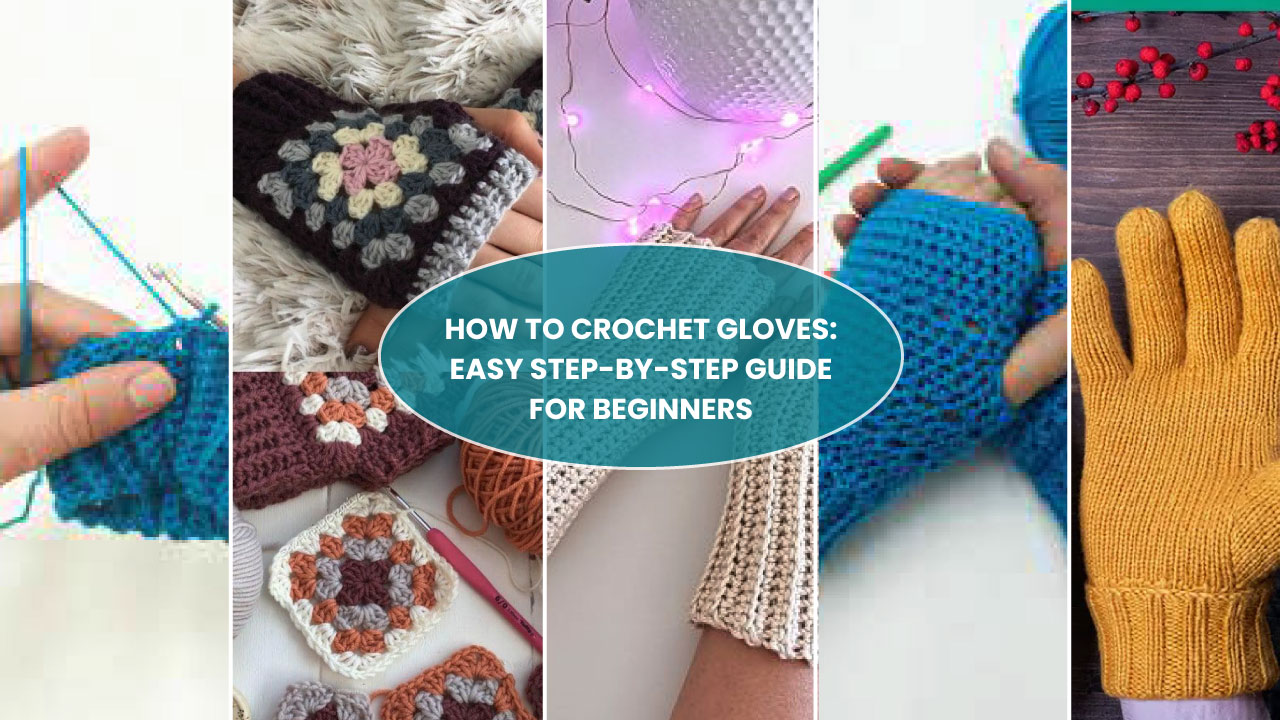

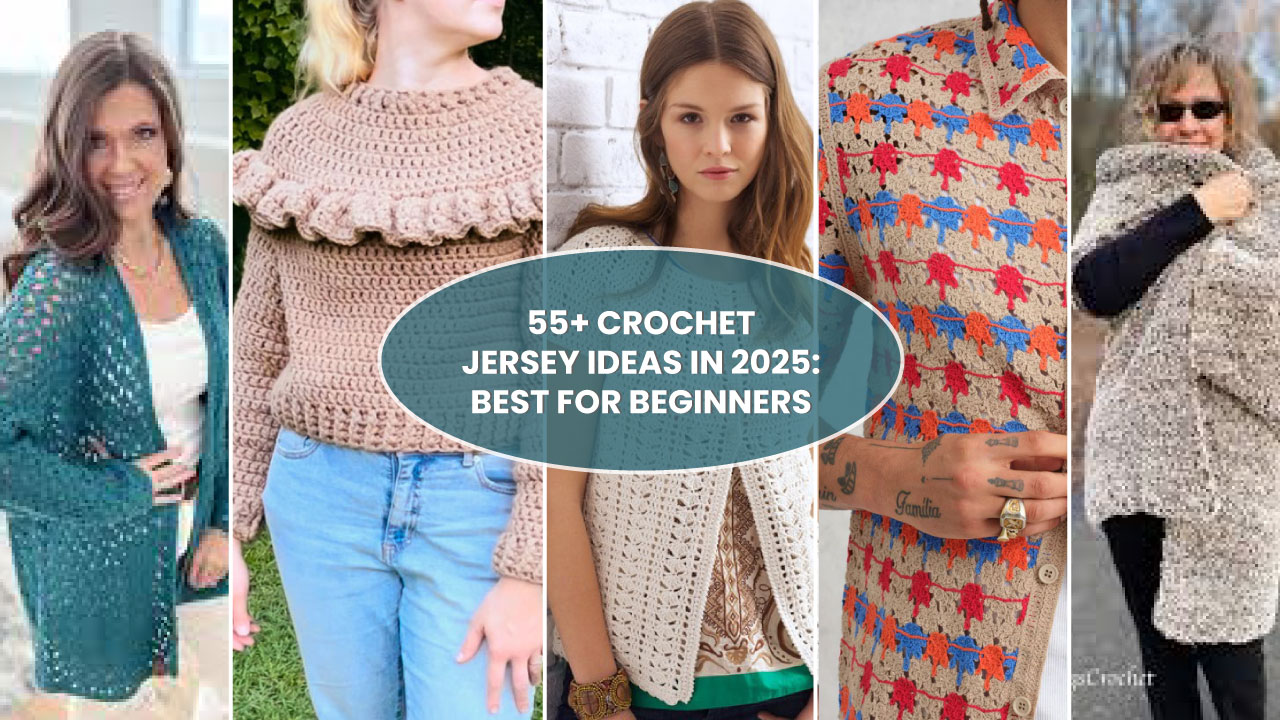
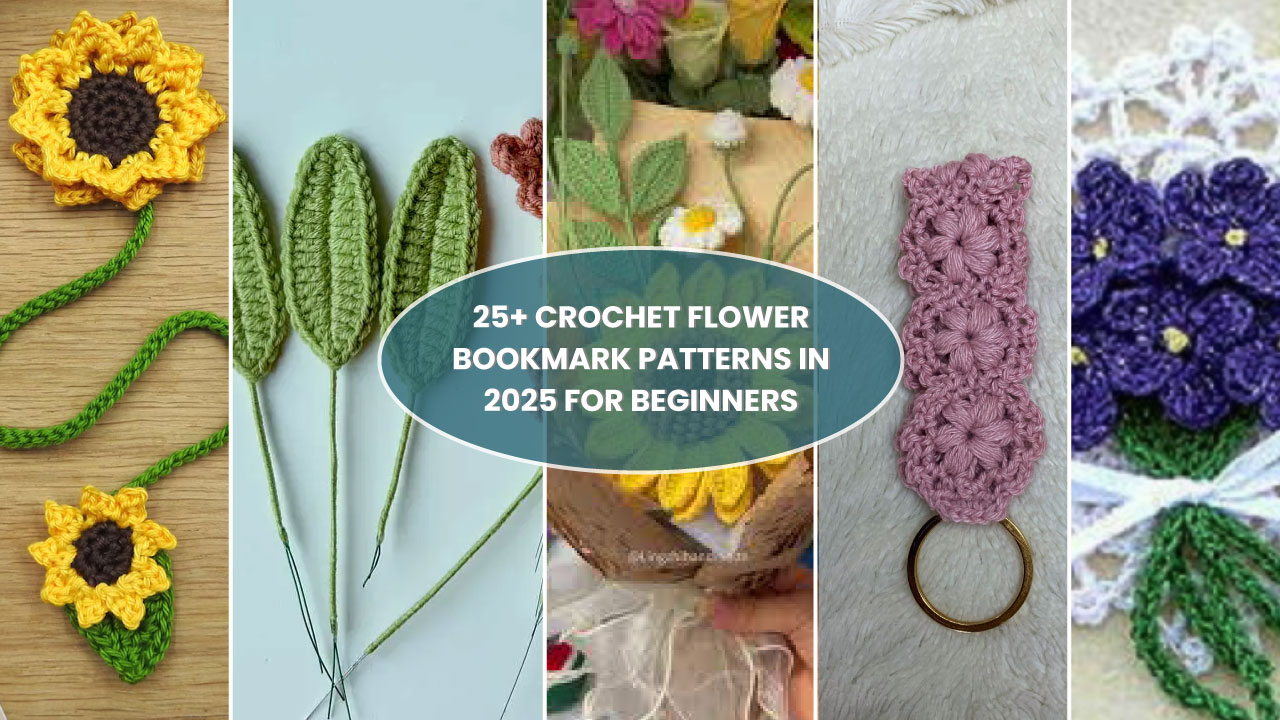
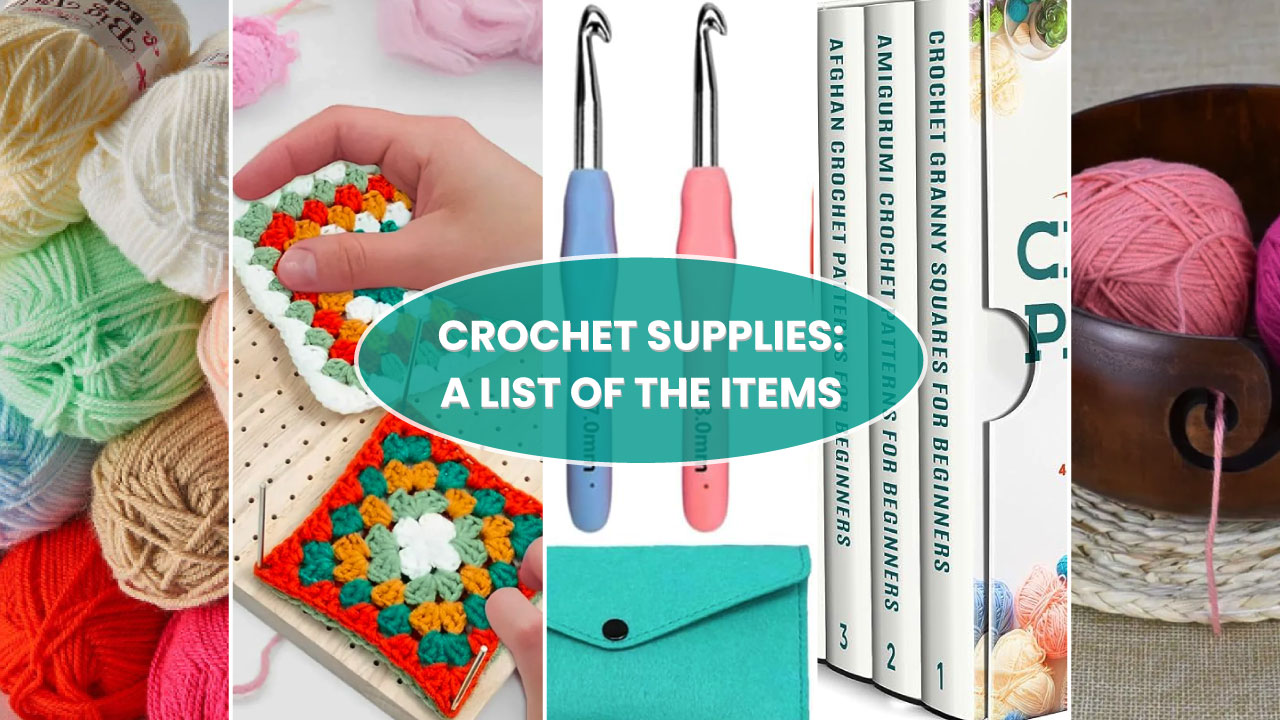
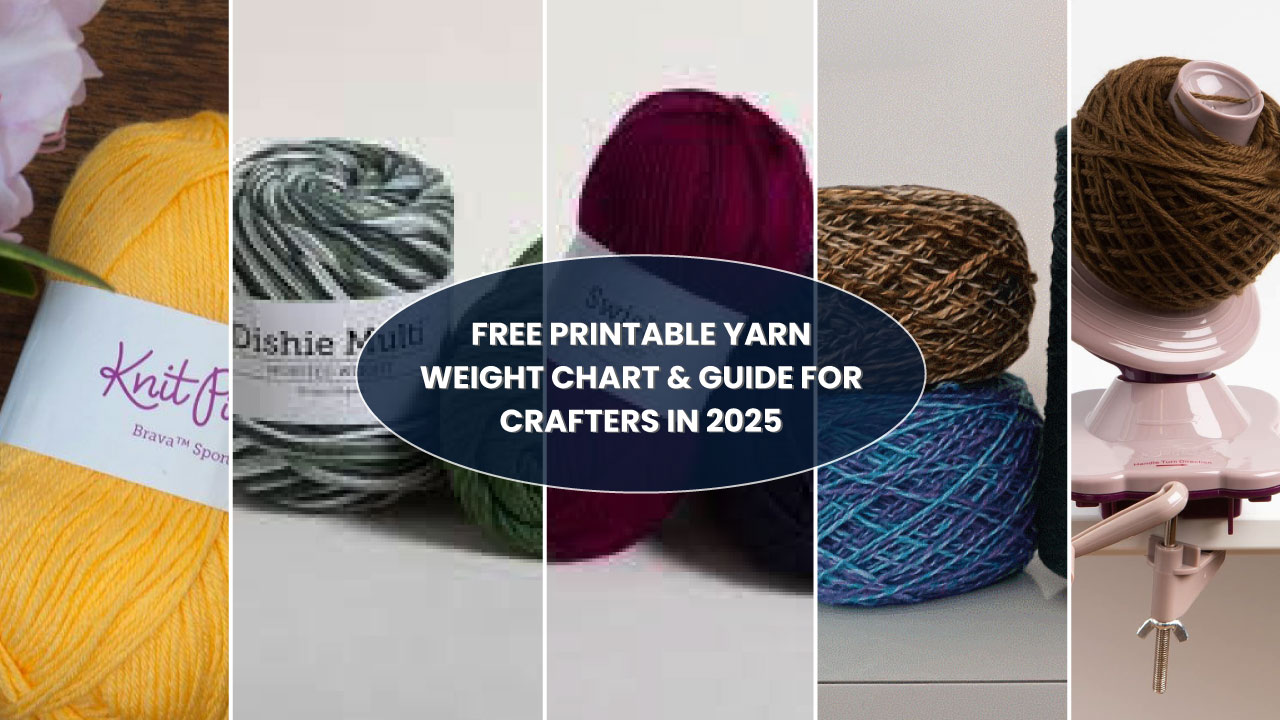
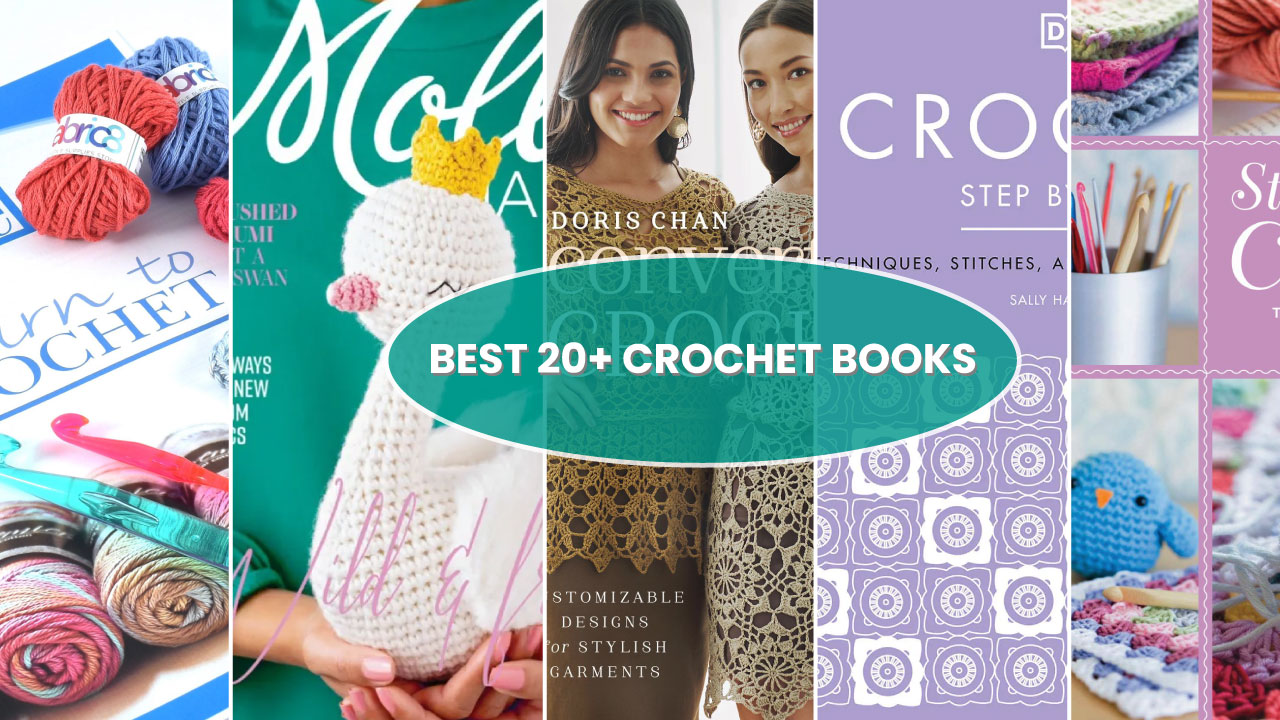

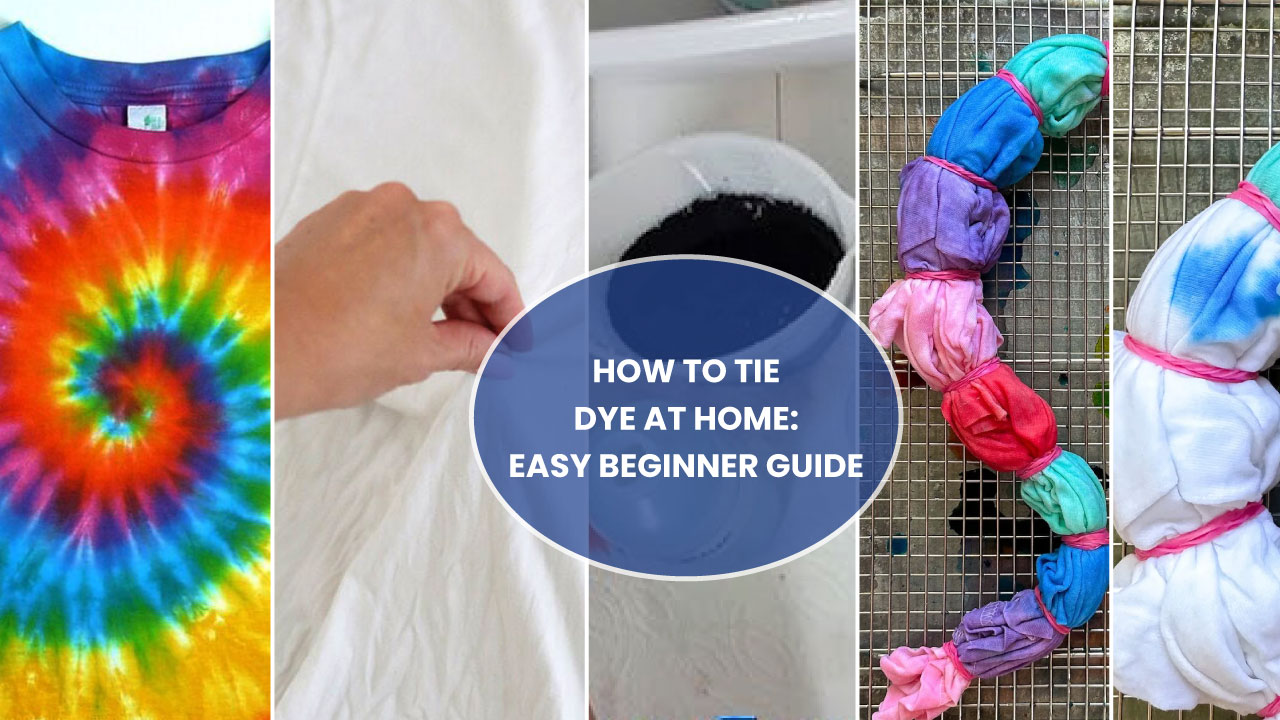

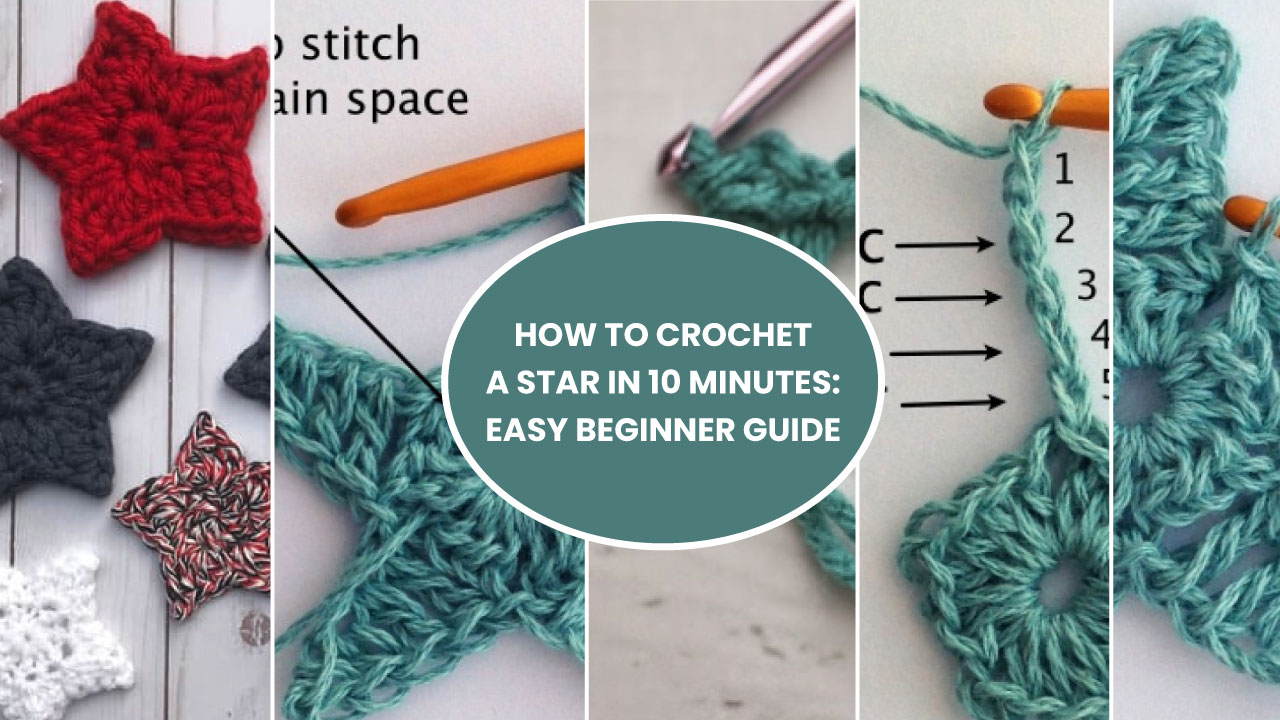
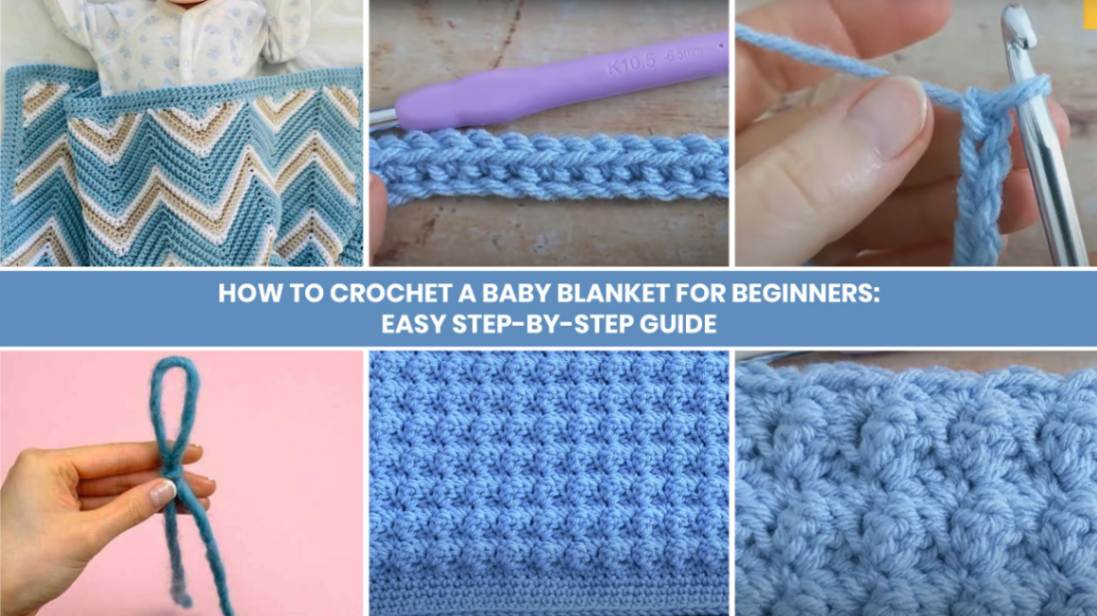
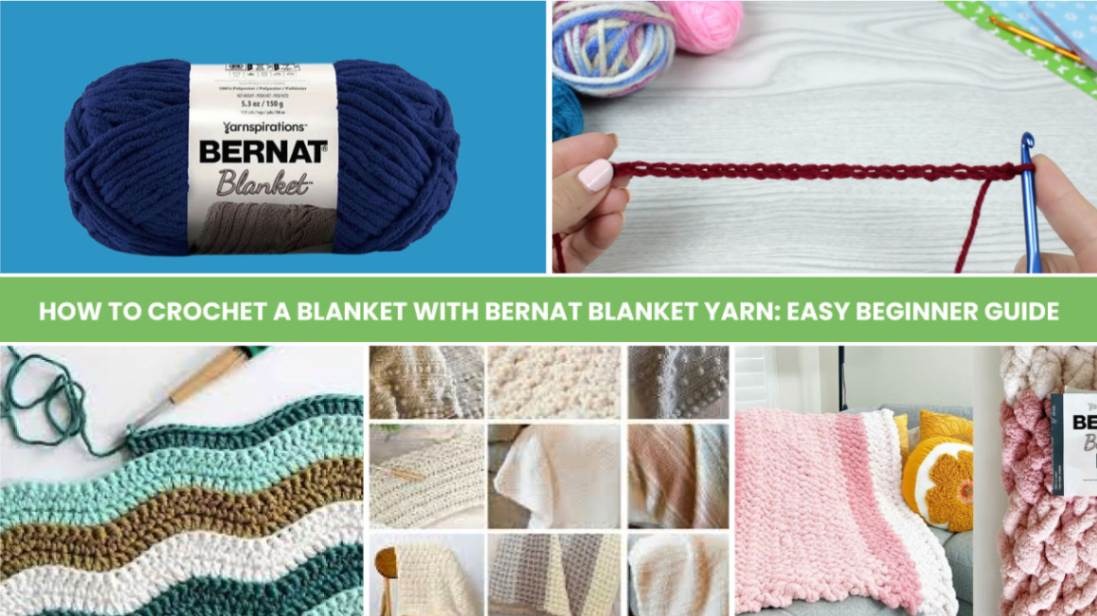
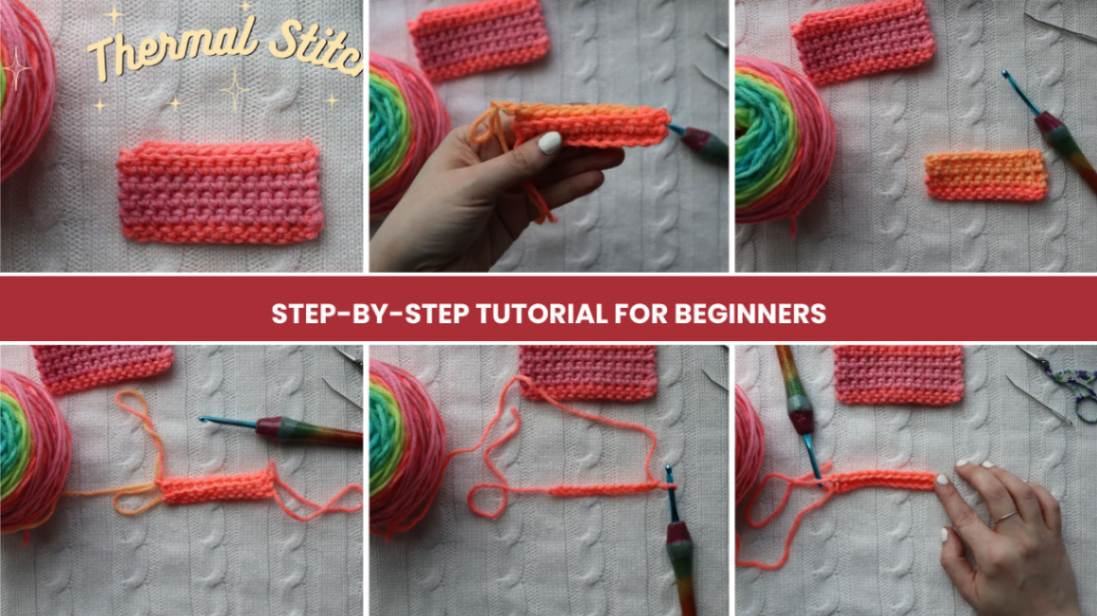
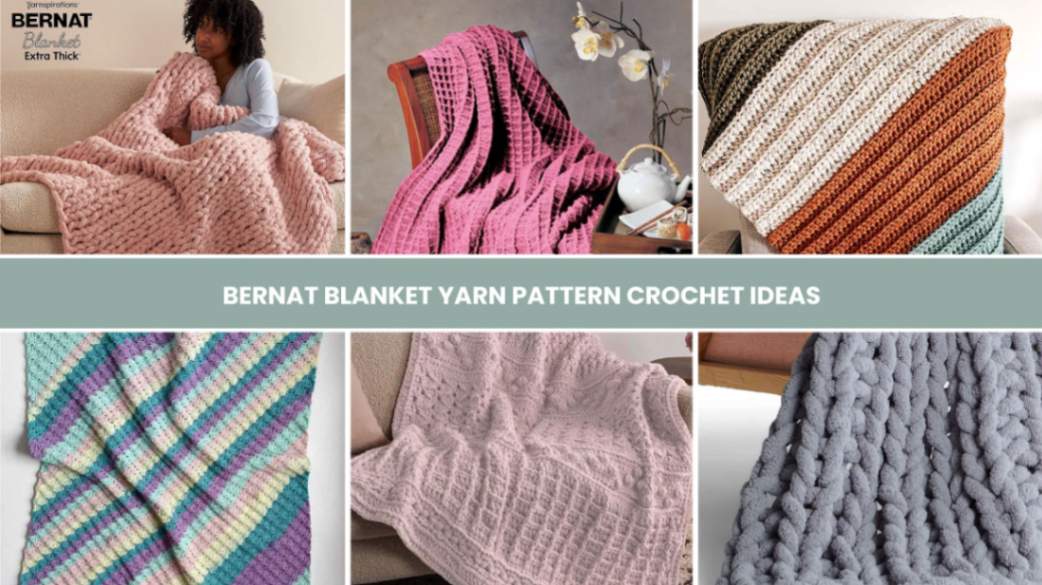
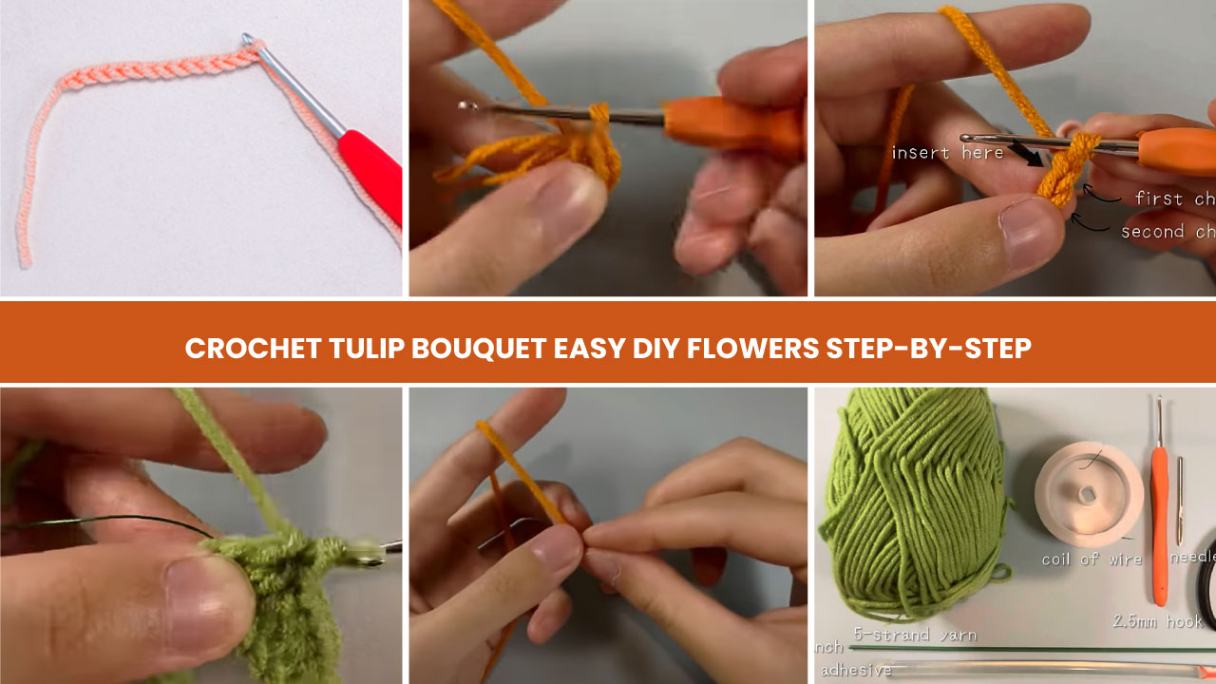

![How to Crochet Sunflower Bouquet [6 Easy Steps]](https://crochetmind.com/wp-content/uploads/2025/06/How-to-Crochet-Sunflower-Bouquet-6-Easy-Steps.jpg)


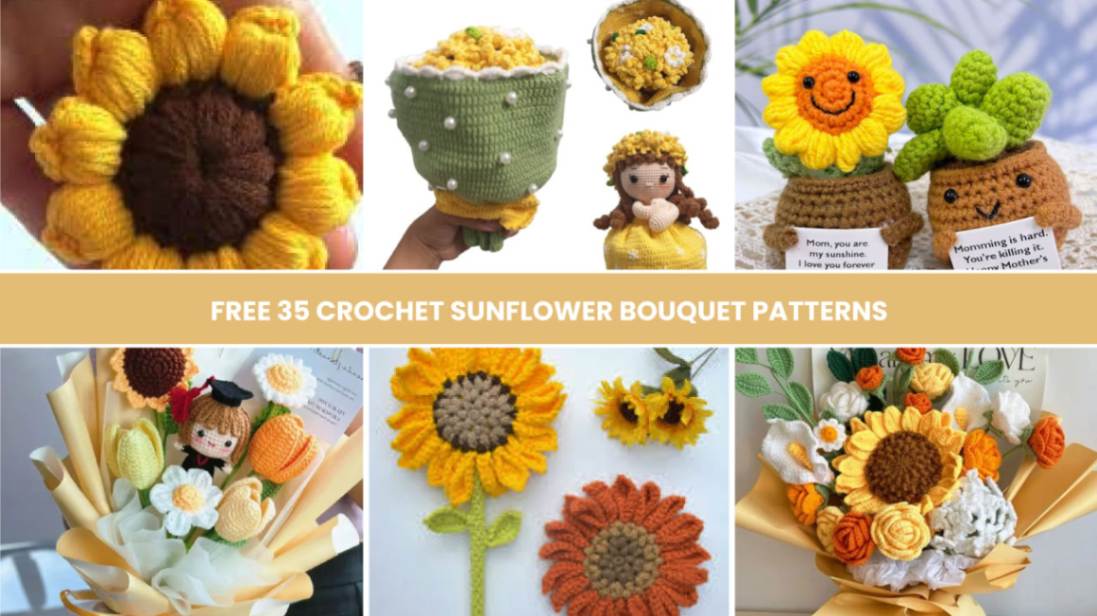
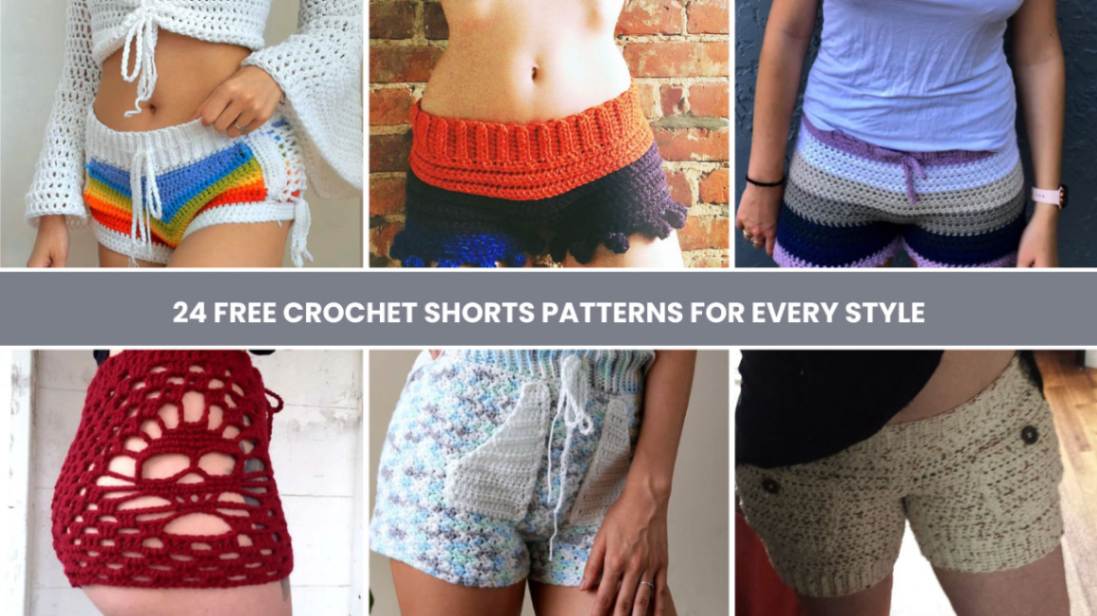
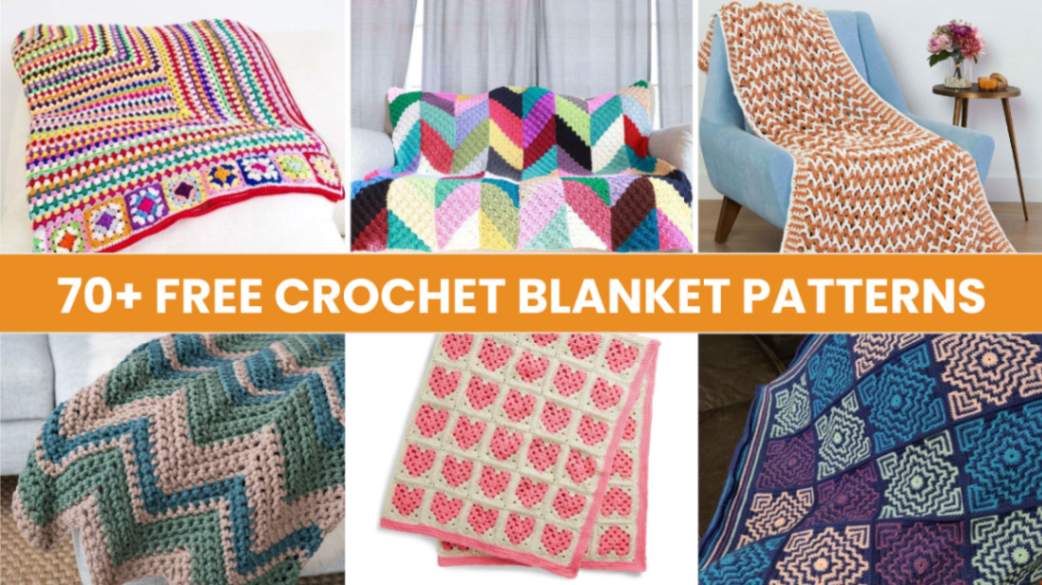
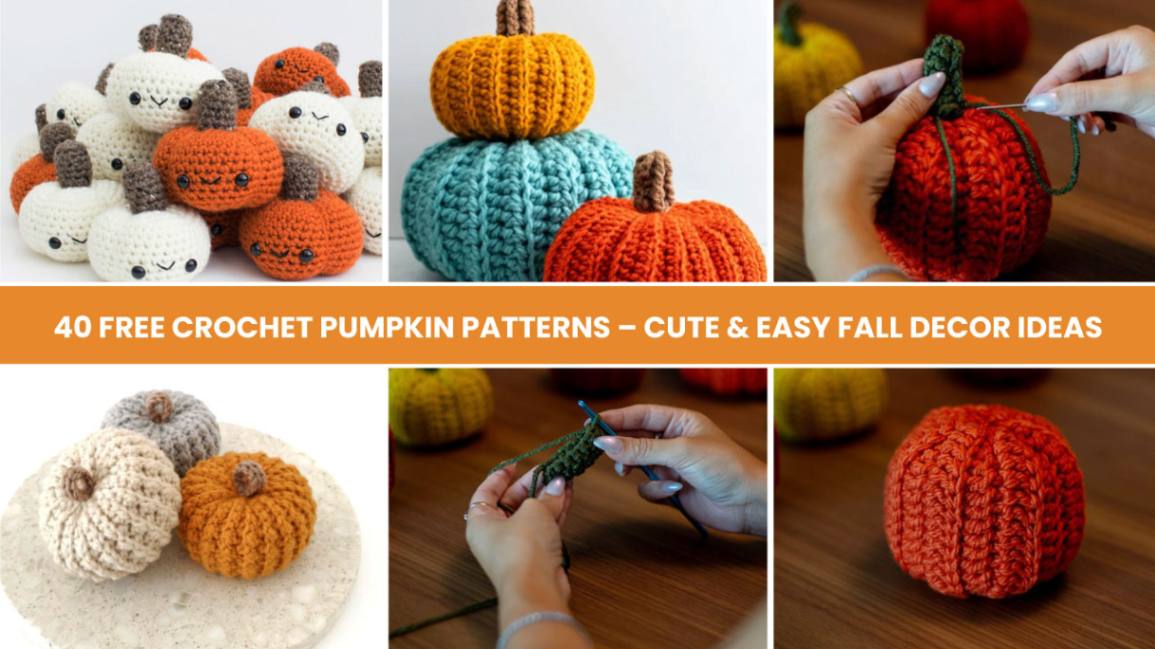
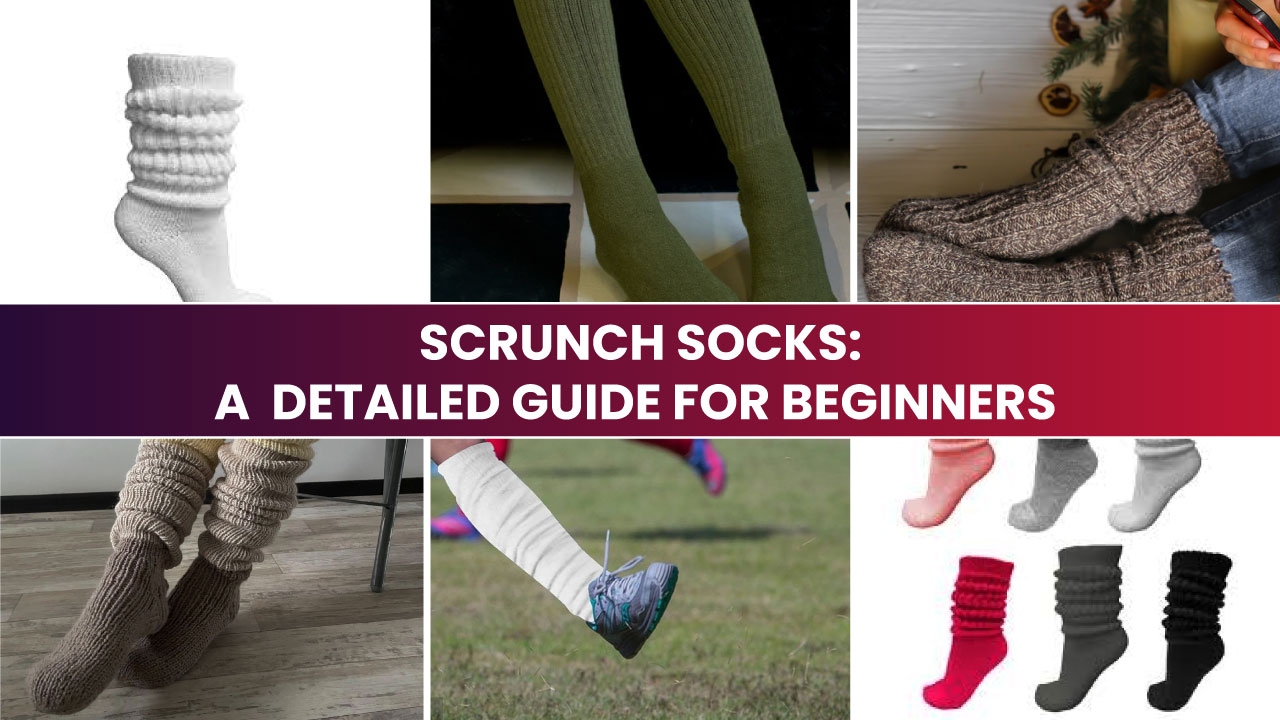


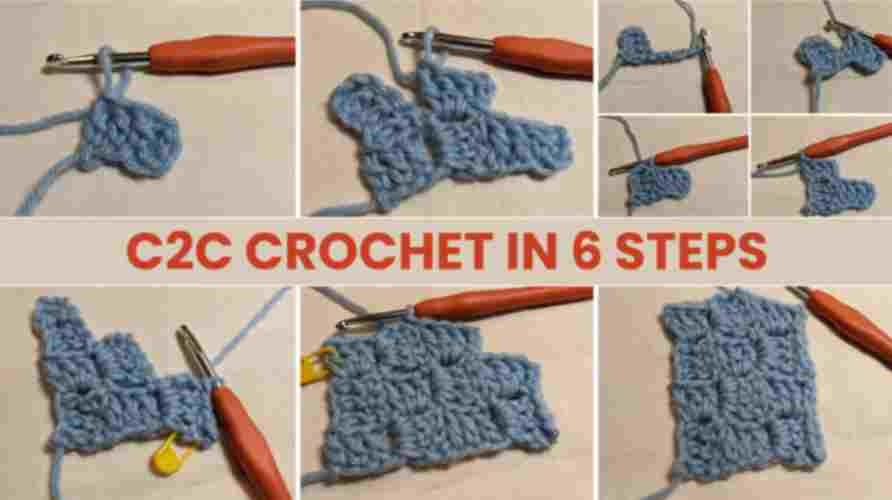



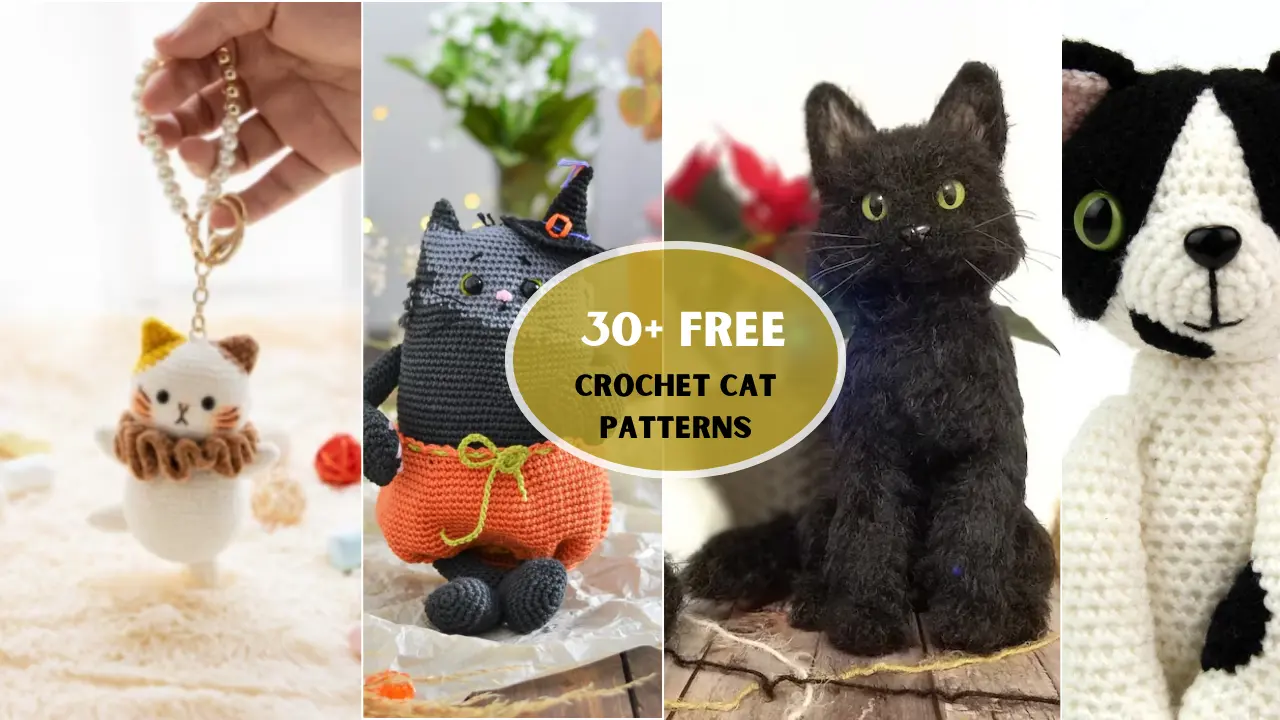
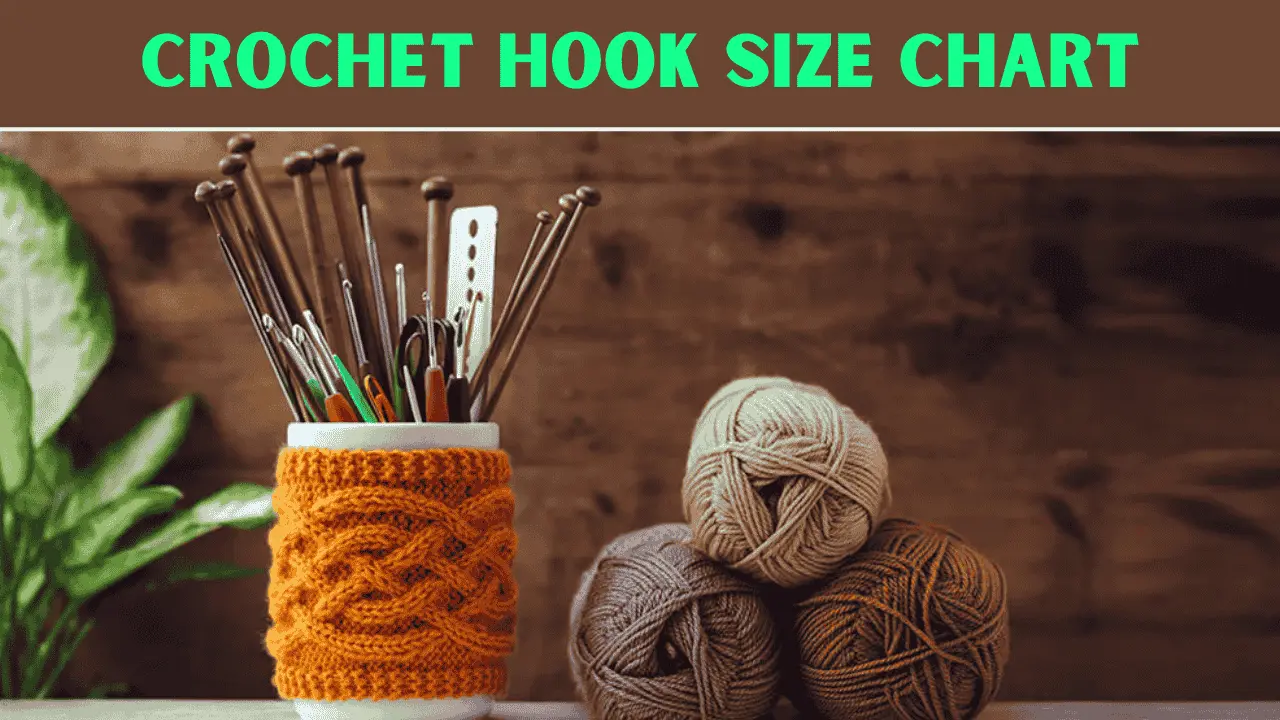
![How to Crochet a Bag? [6 Easy Steps with Pictures]](https://crochetmind.com/wp-content/uploads/2024/10/How-to-Crochet-a-Bag.webp)
